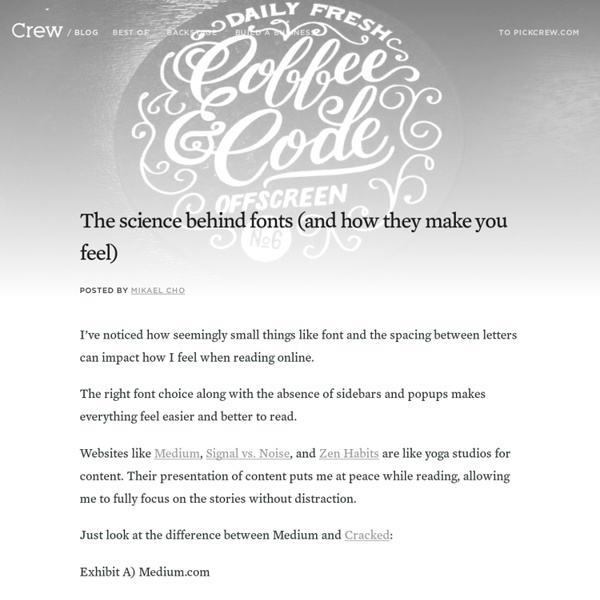The science behind fonts (and how they make you feel)

untitled
47 Top Typography Tools and Resources
Typography is the foundation of design on the web. Back in 2006, designer and founder of iA Oliver Reichenstein even went so far as to proclaim "web design is 95% typography." It's imperative, then, to have a thorough, grounded education in optimizing and utilizing typography to create a balanced, harmonious, accessible hierarchy of content, when working on the web. To help you improve and learn more about typography, we have compiled 25 useful tools and resources, from fundamentals to modular scales. Have we left out your favorite typography tool or resource? 1. Founded in 2008, Typekit offers a library of fonts, from old classics to new favorites, which can be used on the web. The browsing interface is well organized. 2. Recently acquired by Monotype, Typecast provides a platform to quickly style type in the browser and check for readability, rendering and beauty as you work. 3. Typetester was launched back in 2005, and is still a useful tool today. 4. 5. 7. 8. 9. 10. 11. 12. 13. 14.
Related:
Related:



